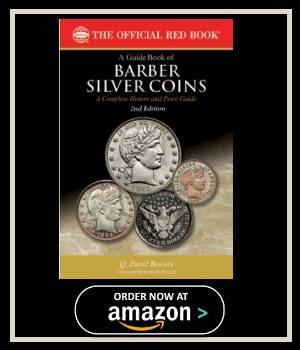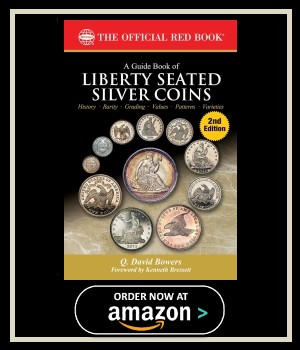
United States Dime Coin: A Comprehensive Guide
The dime, a one-tenth of a dollar coin, holds a significant place in American numismatics. It was authorized by the Coinage Act of 1792, just like the half dime. Over the years, the dime has undergone various transformations in design and historical significance. In this detailed exploration, we will delve into the intricate history, key specifications, and cultural impact of the United States dime. Ultimately, you’ll discover how this small coin has made a big impact.
The Origins and Evolution of the Dime
Early Designs: From Flowing Hair to Capped Bust
The journey of the U.S. dime began with its authorization in 1792. For instance, the first dimes, known as Flowing Hair Dimes, were minted in 1796. These early coins, therefore, featured a depiction of Lady Liberty with flowing hair. This design reflected the neoclassical artistic trends of the era. However, this series was quite short-lived. Subsequently, the Draped Bust design followed, offering a more refined portrayal of Liberty. This series was minted from 1796 to 1807. Interestingly, these early dimes are quite rare today, making them highly sought after by collectors.
Following these initial designs, the Capped Bust dime emerged in 1809. This iteration presented a profile of Liberty wearing a cap, symbolizing freedom. The Capped Bust design remained in production until 1837. Importantly, these early federal coins established the dime’s presence in American commerce. Their historical context makes them fascinating study pieces for numismatists. Indeed, each series tells a unique story about the nation’s early years. Consequently, they offer valuable insights into the nascent United States Mint.
The Enduring Seated Liberty Dime
After the Capped Bust series, the **Seated Liberty dime** became the standard. This iconic design, featuring Liberty seated on a rock and holding a shield, dominated American coinage for over half a century, specifically from 1837 to 1891. Consequently, many variations and subtypes exist within this long-running series, each offering unique collecting opportunities. Therefore, collectors often focus on specific dates or mint marks within the Seated Liberty series. Its longevity speaks to its widespread acceptance and utility during a period of significant national growth. Moreover, these coins are popular for their intricate details.
Twentieth-Century Designs: Barber and Mercury
The late 19th century brought about a new aesthetic with the introduction of the **Barber dime** in 1892. Designed by Charles E. Barber, this coin showcased a classical interpretation of Liberty’s head. It continued the tradition of portraying allegorical figures. The Barber dime circulated until 1916. Nevertheless, the early 20th century soon ushered in one of the most beloved dime designs: the **Mercury dime**. This coin, officially known as the Winged Liberty Head dime, was designed by Adolph A. Weinman and first appeared in 1916. Its striking imagery of Liberty wearing a winged cap captivated the public. As a result, it quickly became a collector favorite. The Mercury dime remained in production through 1945.
The Modern Roosevelt Dime
In 1946, a new design honoring President Franklin D. Roosevelt was introduced shortly after his passing. The **Roosevelt dime**, designed by John R. Sinnock, depicts President Roosevelt’s profile on the obverse. The reverse features a torch, an olive branch, and an oak branch, symbolizing liberty, peace, and strength, respectively. This design has endured for decades, making it the longest-running dime series. Consequently, many millions of Roosevelt dimes have been minted. They represent a familiar part of everyday American commerce. Furthermore, variations such as proof sets and special mint issues appeal to modern collectors. Thus, the Roosevelt dime continues to be a cornerstone of contemporary numismatics.
—
Key Specifications and Numismatic Significance
Dime Composition Through the Years
Throughout its history, the dime’s composition has evolved significantly. Early dimes, for instance, were composed of 89.24% silver and 10.76% copper. This silver content was gradually increased to 90% in later silver dime issues. However, a major change occurred in 1965 due to rising silver prices. At that time, the U.S. Mint transitioned to a clad composition for the dime. Modern dimes are now made of a copper core bonded between two layers of cupronickel. Specifically, this composition is 75% copper and 25% nickel, creating a distinctive sandwich-like appearance. Therefore, this change marked a pivotal moment in U.S. coinage. It affected not only the dime but also quarters and half dollars.
The Dime’s Dimensions and Features
In terms of size, the dime has maintained a relatively consistent diameter. Currently, it measures 17.91 millimeters (0.705 inches) in diameter and 1.35 millimeters (0.053 inches) in thickness. Despite its small size, it plays a vital role in daily transactions. Interestingly, its small size also contributes to its ease of loss, sometimes making older, less common dates harder to find in circulation. Furthermore, its reeded edge, featuring 118 reeds, helps to distinguish it from other coins by touch, especially for those with visual impairments. This feature is a carryover from earlier silver coins where reeding helped prevent “clipping” of precious metal. The precise measurements ensure consistency across all minted dimes, providing uniform usability.
Strategies for Collecting Dimes
Collecting dimes can be a rewarding hobby for both novice and experienced numismatists. The value of a dime depends on several factors. These include its condition, rarity, mint mark, and historical significance. For example, a 1916-D Mercury dime in good condition can fetch thousands of dollars. Conversely, a common Roosevelt dime from recent years may only be worth its face value. Therefore, understanding grading standards is crucial for collectors. Professional grading services, moreover, provide objective assessments of a coin’s condition, which greatly impacts its market value. Consequently, a higher grade generally translates to a higher price. It’s truly a fascinating field of study.
Valuing Your Dime Collection
Many collectors specialize in specific dime series, such as early silver issues or proof sets. Others focus on collecting a “type set,” which includes one example of each major design. Joining local coin clubs and participating in online forums can provide valuable resources and opportunities for learning and trading. Additionally, consulting reputable coin catalogs and price guides is essential for making informed purchasing and selling decisions. Thus, continuous research and networking enhance the collecting experience. In conclusion, the United States dime, though small, offers a rich tapestry of history, design, and collecting potential. Ultimately, it truly makes it a coin with a big impact.
The dime’s history can be traced back to the early days of the United States, when the Founding Fathers were shaping the nation’s currency system. The Coinage Act of 1792, signed into law by President George Washington, established the foundation for the country’s coinage, and among the coins it authorized was the dime. At that time, the dime was often referred to as the “disme.”
The physical characteristics of the dime have evolved over the years, but there are certain specifications that have remained relatively consistent. The modern dime weighs 2.268 grams, has a diameter of 17.91 mm, and a thickness of 1.35 mm. Its small size makes it one of the most easily recognizable and commonly used coins in everyday transactions. If you ever find yourself on a game show like Jeopardy, you might want to remember that the edge of the dime features 118 reeds, an interesting tidbit of information that could come in handy.
Design Evolution
The dime has seen numerous design changes throughout its history, reflecting the evolution of American culture, values, and political figures. These designs include:
Draped Bust (1796–1807): The Draped Bust dime featured a profile of Liberty on the obverse and an eagle on the reverse. This design is considered one of the most beautiful and iconic in American coinage.
Capped Bust (1809–1837): The Capped Bust dime continued to depict Liberty on the obverse, but the reverse featured an updated eagle design.
Seated Liberty (1837–1891): The Seated Liberty dime introduced the image of Lady Liberty seated on a rock, with various modifications over the years.
Barber (1892–1916): The Barber dime, named after its designer Charles E. Barber, featured a conservative and dignified profile of Liberty on the obverse and an intricate wreath on the reverse.
Winged Liberty Head (“Mercury”) (1916–1945): The Mercury dime, despite the name, actually depicts a Winged Liberty head. This design is renowned for its artistry and symbolism, with Liberty wearing a winged cap on the obverse and a fasces, symbolizing unity and strength, on the reverse.






 '
'